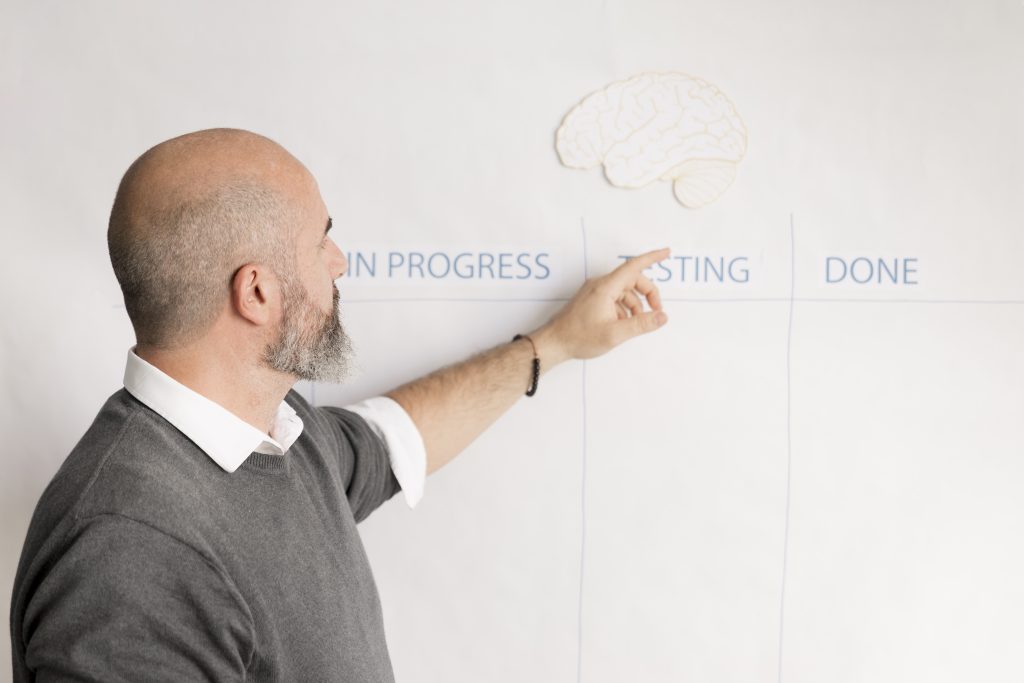How to Use Stillness to Trigger Strategic Thought
Emma Brooks July 9, 2025
In a culture that prizes endless activity, stillness holds an underrated power. Increasingly, busy professionals and creatives are discovering that stillness triggers strategic thought. Whether through short mindful pauses or extended silent retreats, structured quiet is becoming a key wellness trend in 2025. Stillness isn’t about stopping—it’s about creating mental space for clarity, insight, and strategic creativity. This article explains why stillness matters and offers practical guidance to help you make thoughtful quiet part of your everyday life.

What Science Reveals About Stillness
1. Neuroscience: Brain Restoration Happens in Silence
Silence is far from passive—it’s a trigger for neurological renewal. A Cincinnati Children’s Hospital study found that just three days of silence can spur neurogenesis in the hippocampus, improving cognitive function and emotional control . Silence also boosts the default mode network, enabling deeper reflection.
2. Attention Restoration from Quiet Breaks
A 2022 review in Frontiers in Psychology confirmed that structured breaks, including quiet moments, restore attention more effectively than random downtime . These quiet intervals aid mental focus and decrease decision fatigue.
3. Lower Stress, Higher Emotional Balance
Stillness helps manage cortisol and stress. Guardian coverage of recent psychology research showed that intentional silence can both lower stress markers and balance emotions more effectively than listening to music . Meanwhile, mindfulness practices—central to stillness—have been connected to sustained reductions in anxiety .
Why Stillness Fosters Strategic Thought
Stillness allows your brain to access deeper thinking patterns:
- Incubation: Quiet provides the mental pause needed for ideas to coalesce. Creativity research finds that moments of unstructured thought often yield insights .
- Emotional clarity: Silence helps separate emotion from logic, helping leaders make less reactive decisions and respond more strategically .
- Resilience buffer: Regular breaks in silence build long-term stress resilience, preventing burnout and enabling sustained high performance .
Practical Stillness Techniques
Here are four ways to use stillness purposefully to spark strategic insight:
1. Micro pausa (3–10 minutes)
- Create mini-breaks: close eyes, breathe, and listen to silence.
- Place them after key blocks of deep work.
- Use timers or mindfulness apps.
These micro pauses support the brain’s executive function without disrupting workflow.
2. Silent Walking Hours
- Take daily 10–15 minute walks with no audio input.
- Focus on ambient sounds or breathing.
- Schedule walks into your calendar to ensure consistency.
Research links silent nature walks to improved mood and blood pressure without distraction .
3. Digital Detox Intervals
- Choose a phone-free hour daily or a weekend day monthly.
- Use the time for reading, thinking aloud, or observing.
- These intervals give space for perspective formation and creative incubation.
4. Weekend Retreats or Quiet Workshops
- Plan a 1–3 day silent retreat at home or at a dedicated center.
- No screens, talk, or distractions.
- Use time for journaling, vision mapping, or simply sitting.
Even mini retreats can enhance clarity and emotional regulation .
Real-World Examples
- Tech executives at Silicon Valley companies schedule intentional “silent strategy time” to escape back-to-back meetings and find perspective.
- Creative studios like Pixar build quiet “think weeks” between projects to spark innovation without interruption.
- Wellness coaches now teach with “silent starters”—5 minutes of quiet before weekly workshops to prime strategic thinking.
Integrating Stillness Into Life Without Stress
- Calendar it in
- Block “Stillness Session” in your calendar. Treat it as non-negotiable.
- Reduce guilt
- Frame it as strategic — not a luxury.
- Be flexible
- Adjust formats—it can be a walk, a bath, or sitting outdoors.
- Assess impact
- Journal afterward: what insights emerged? How do you feel?
- Scale gradually
- Start with micro breaks, then build to digital detox or weekend retreats as comfort grows.
Why This Matters Now
- High cognitive loads in hybrid work environments erode focus faster than ever .
- AI burnout: always-on digital tools fill the mind—silent breaks help regain balance.
- Wellness trends: “restorative performance” is thriving. People aren’t just seeking rest—they want rest that enhances thinking and resilience.
Possible Missteps & How to Avoid Them
- Perfectionism: Not every moment of stillness must be profound. Small is powerful.
- Escape mindset: Stillness should serve strategic thinking, not just avoidance.
- Ignoring needs: Introverts may prefer solitude; extroverts may combine silent walks with periods of social reflection.
Conclusion
In 2025, strategic advantage isn’t just about what you do—it’s also about how you pause. Stillness triggers strategic thought by providing mental space, clarity, and renewal. Backed by neuroscience, leadership practice, and wellness trends, it’s now clear: if you want to think more effectively, your brain needs silence, not more noise. Schedule stillness like you schedule work—and give your mind the chance to see what comes next.
References
- Cincinnati research on silence and hippocampal growth
PMC: Silence Neural Impact Study, 2021 - Frontiers in Psychology review on strategic rest and attention
Frontiers Psychology: Structured Rest, 2022 - Guardian article: silence lowers stress better than music
The Guardian: Power of Silence, Feb 2025





